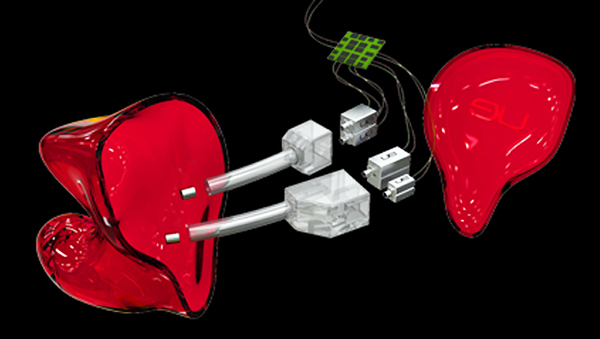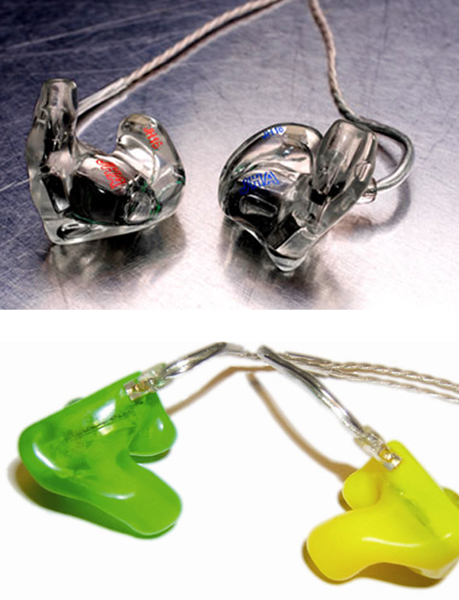
At The Ear
The elements for personal monitoring include the method of mixing the sources – the monitor console or individual mixers for the musicians, the delivery system for those signals, and the transducers themselves.
Though headphones are occasionally used, ear pieces or “buds” as they’re commonly called are much less obtrusive. Some of the differences among these in-ear devices involve custom-molded versus standard foam tips, the number of individual transducers used to reproduce full-bandwidth audio, the types of drivers used and how they are crossed over, and how they are constructed.
Some companies, such as Ultimate Ears, Future Sonics, JH Audio and Sensaphonics, only offer custom-molded in-ears that fit the exact contours of a particular musician’s ear canals. This precision leads to a tighter seal to attenuate the ambient sound, potentially greater comfort, and a more controlled audio environment. The process begins with a visit to an audiologist who takes molds of both ears.
Some even provide guidance to find a qualified audiologist, with precise instructions of how deep into the canal the mold should go and that the person’s mouth should be open during the process “to ensure a more secure fit while the artist is singing, playing and instrument, or talking.”
Having a tight seal within the ear canal also enhances bass performance. Jack Kontney of Sensaphonics notes that “the soft silicone flexes with the ear canal when singing and changing facial expressions” so that a complete seal is maintained. An incomplete seal can lead to a loss of low frequencies, especially below 100 Hz – and is especially important when using balanced-armature drivers.
A tight seal also prevents the loud ambient sounds from entering, so that effective monitoring can be attained at lower levels. Further, according to Sensaphonics, medical-grade silicone provides several dB better attenuation than acrylic, reducing outside sounds by greater than 30 dB.
Ear buds use either dynamic or balanced-armature drivers, or a combination of both, to reproduce the audio signal. Dynamic drivers function similarly to loudspeaker cones, only are miniaturized. They can be more efficient at reproducing bass frequencies, with potentially less detailed highs.
Balanced armatures suspend a rod surrounded by a coil within a magnetic field, and the motion of the rod is coupled with a diaphragm. Their response tends to be highly detailed. As an example, the AF140 uses a dynamic and a balanced-armature driver in tandem for the lows, crossed over to a balanced armature for the highs.
With some buds, the frequency spectrum is divided between a pair of drivers; others use multiple drivers with several crossover points, and offer models with three, four, or more. Ultimate Ears 18 Pro Custom IEMs have six balanced-armature drivers – two LF, one each low and high mid, and two HF – while the Audiofly AF180 offers four balanced armatures and the JH Audio JH16 is a 3-way design with eight drivers per ear (double dual LF, dual mid, and dual high).
Recently introduced mg6pro ear buds from Future Sonics incorporate multiple 13 mm proprietary miniature dynamic transducers, crossover-free, and with proprietary +/-20 dB Ambient Noise Rejection (A.N.R.).
Universal-fit in-ear monitors are available from a variety of companies, such as Shure, Audiofly, Avlex MIPRO, Westone, Etymotic, and others. These units couple the earpiece with replaceable foam tips that conform to the contours of the ear canal.
While they don’t offer the fit and seal of a customized system, they are high-performance audio devices, like studio headphones. Listening recently to a CD through a pair of Audiofly AF140s, I had a “what’s that?” reaction and realized that I was hearing the detail of the flute player’s breathing on the recording.


